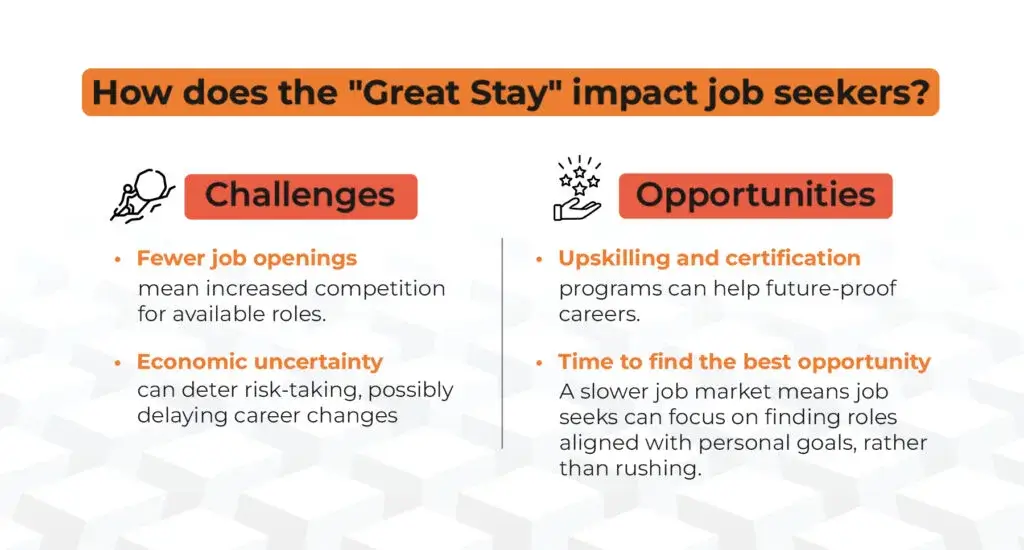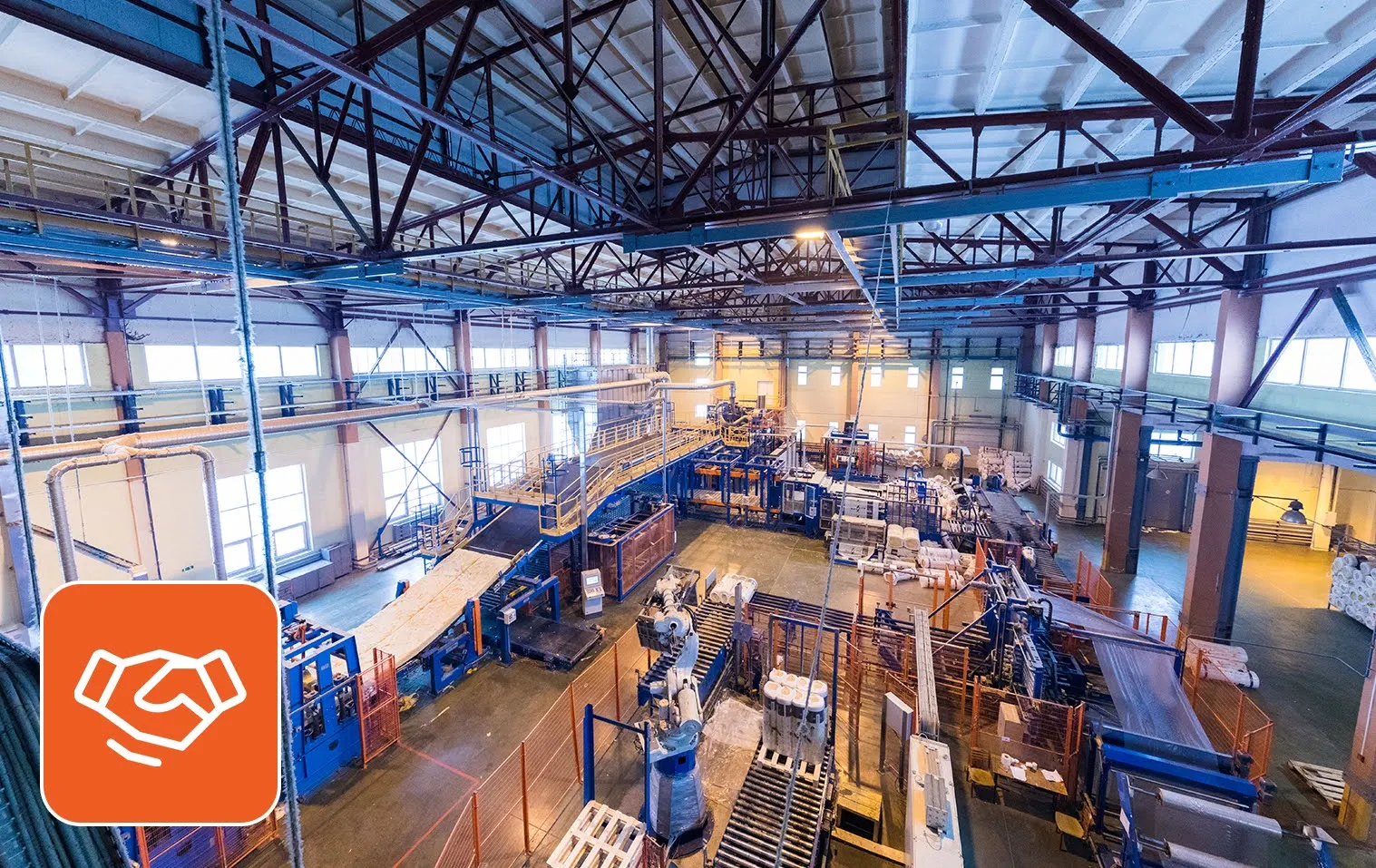The job market never stays still, and 2024 is no exception. Say hello to the “Great Stay.” After the whirlwind of the “Great Resignation,” when millions of workers left their jobs chasing better opportunities, things have settled into a new phase of caution and stability. Voluntary quits are at record lows, and this shift is shaking things up for job seekers, career changers, and businesses.
What’s driving this change? How is it reshaping the workplace? And how can employers and employees thrive in this new era? Dive into our blog to uncover the answers and get ahead in this evolving job market!
What is the “Great Stay”?
The “Great Stay” marks a new chapter in the job market — a time of stability where fewer people are taking the leap to leave their jobs. Remember the “Great Resignation” of 2021 and 2022? Back then, employees were resigning in droves, chasing higher pay, better perks, and more meaningful work. But fast forward to 2024, and the quit rate has dropped to just 2.2%, according to the U.S. Bureau of Labor Statistics.
So, what’s behind this shift? Workers now value stability over change, choosing to stay put rather than gamble on new opportunities. It’s not just about the economy — it’s a reaction to the political, economic, and corporate realities shaping the world today. The “Great Stay” is here, and it’s redefining how we think about work and career growth.
The Key Drivers of the “Great Stay”
Several factors are contributing to this shift in employment dynamics:
Economic Tension and Uncertainty
High inflation, elevated interest rates, and rising costs of living have created financial pressures, leading employees to adopt a “wait-and-see” mentality when it comes to career moves. Economic uncertainty, compounded by geopolitical instability from conflicts in the Middle East and Ukraine, has reinforced the need for job security.
Changing Corporate Priorities
During the pandemic, businesses aggressively hired people to manage increased demand. However, the soaring growth of those years has slowed. Rising interest rates and tighter budgets have shifted corporate hiring policies toward cost-conscious decisions, reducing job openings and making talent-hunting less dynamic.
Fallout of Cost-Conscious Policies
Employees have also noticed a changing tone from employers. The rapid hiring frenzy of past years has been replaced with tighter budgets, mass layoffs in many industries, and streamlined operations. This has contributed to reduced worker confidence in making bold career moves.
What This Means for Job Seekers
The “Great Stay” poses both challenges and opportunities for those considering career shifts. For job seekers, fewer opportunities may demand a strategic approach to job hunting and an increased emphasis on networking and skills building. Staying competitive may include upgrading technical or leadership skills to match evolving job demands.

Implications for Employers and HR Professionals
For employers and HR professionals, the “Great Stay” represents an opportunity to focus on talent retention. With employees choosing security over change, companies have a greater chance of nurturing employee loyalty and engagement.
Here are key areas to consider:
Retention is Key
Organizations can adapt to the new job market by prioritizing employee engagement through competitive benefits, professional development opportunities, and workplace culture improvements. Proactive communication about career growth prospects and internal mobility will further strengthen employee confidence in their current roles
Adapting Talent Acquisition Strategies
While hiring may have slowed, certain industries are still experiencing talent shortages. HR teams should focus on long-term planning, nurturing relationships with potential hires, and adopting flexible approaches to contract or freelance opportunities to fill immediate gaps.
Investing in Wellbeing
Economic and geopolitical stress affects employees’ mental health. Employers who prioritize well-being initiatives — such as mental health programs, extended wellness benefits, and flexibility — are more likely to retain top talent.
The Future of Work in the “Great Stay” Era
The “Great Stay” shifts expectations for both workers and employers, paving the way for thoughtful decision-making. But what lies ahead?
Emerging Workplace Trends:
- Technology Integration – AI and automation will continue reshaping workforce operations, enabling organizations to do more with less.
- Evolving Job Roles – Expect hybrid roles that blend technical and soft skills to become increasingly common.
- Long-term Employee Relationships – Companies may look to build stronger, long-lasting relationships with workers rather than hire quickly to fill short-term needs.
Strategic Recommendations:
- For Job Seekers: Align personal goals with market trends and focus on skills that will remain in demand.
- For Businesses: Invest in employer branding and reframe retention strategies to meet the needs of workers valuing security and growth.
Navigating the “Great Stay” in today’s job market is essential for anyone looking to thrive during this transitional phase. Whether you’re hunting for a new role, exploring a career change, or managing talent as an HR professional, adapting to these shifting dynamics is your key to success.
This moment isn’t just a challenge—it’s an opportunity. By coming together and thinking strategically, organizations can capitalize on the “Great Stay” to build a stronger, more resilient workforce for the future and encourage employee retention with additional benefits



